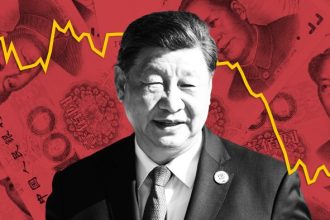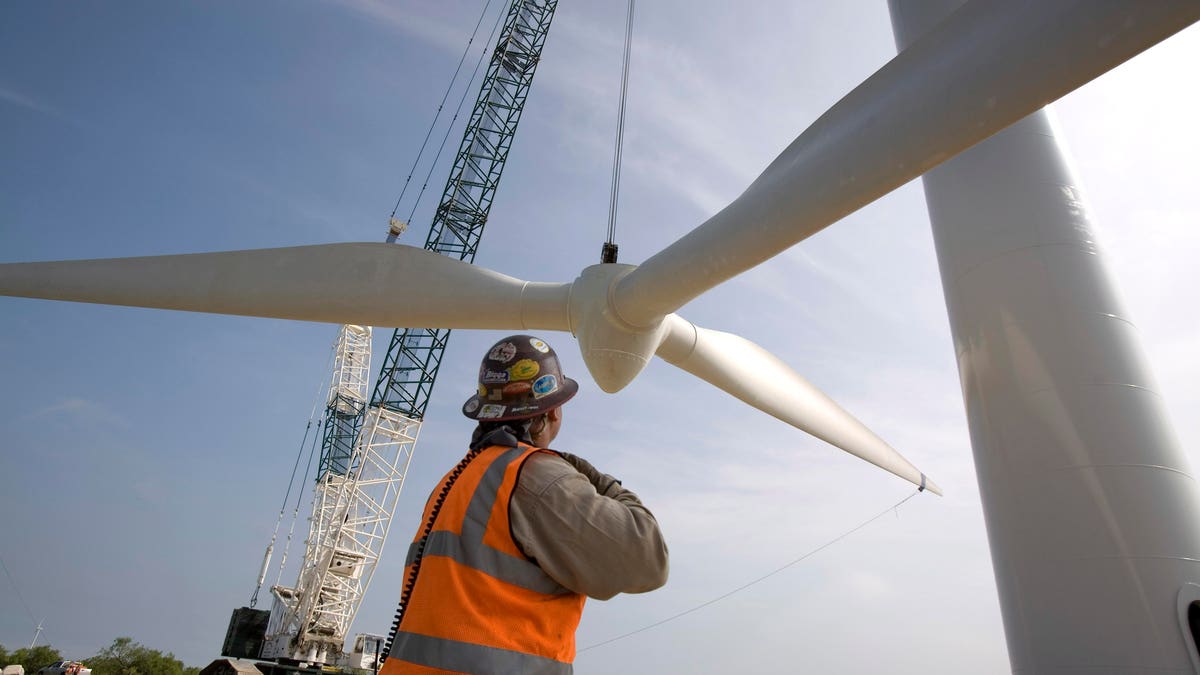The United States’ is in the early stage of a clean energy boom that’s driving new investment and job growth in every state across the nation – thanks to smart climate policy.
Nearly 300,000 new energy jobs were created nationwide in 2022 according to the U.S. Department of Energy’s (DOE) 2023 U.S. Energy and Employment Report (USEER). 114,000 of these jobs were in clean energy technologies like renewables and zero-emission vehicles, and clean energy jobs grew 3.9% compared to 2021, outpacing 3.1% nationwide job growth over the same time.
Clean energy jobs offer higher wages than the national average, and are widely available to workers without four-year degrees, meaning most Americans can access them. Earlier Brookings Institution research found that a clean energy job can equal an 8%-19% income increase, and 45% of all workers in clean energy production only have a high school diploma, while earning higher wages than similarly educated peers in other industries.
This data matches up against Energy Innovation modeling of IRA clean energy tax credits which predicts massive clean energy job and GDP growth, along with billions in consumer savings by 2030 in Red and Purple states like Texas, Florida, North Carolina, and Georgia.
In addition to this growth, more than $240 billion in new clean energy investments have been announced since August 2022, when the Inflation Reduction Act (IRA) was signed into law, according to new American Clean Power (ACP) data. These investments – equivalent to total U.S. clean power investment between 2016-2022 – will add 163 gigawatts of clean generation capacity, nearly doubling total nationwide clean power generation to more than 396 GW.
This economic engine, fueled by smart policies and fast-falling technology costs, isn’t going to stall any time soon. Long-term policy certainty created by IRA provisions and the CHIPS and Science Act is onshoring manufacturing, with $227 billion in new investments announced across 116 new manufacturing projects since August 2022, which will create more than 83,000 jobs.
A Clean Economy Means a Thriving Economy
Clean energy investments are creating new jobs and generating new investment in every state across the country regardless of if they’re Red, Purple, or Blue. The 2023 USEER report found the top three states for clean energy job growth were California, (13,000 new jobs), West Virginia (7,000 new jobs), and Texas (5,100 new jobs).
Clean energy’s economic potential is particularly impressive in Texas. Energy Innovation modeling forecasts IRA clean energy tax credits could create more than 100,000 jobs and increase GDP $15 billion by 2030, while cutting household energy spending a cumulative $21 billion through 2050. Clean energy is also protecting Texans from extreme weather – during last week’s historic heat wave, solar and wind provided 35% of statewide power which more than made up for natural gas and coal plants knocked offline by record heat.
“Thanks to President Biden’s historic Investing in America agenda, we expect to see steady growth of jobs to make and build a resilient and clean energy system offering good-paying and secure employment opportunities to America’s workers across the country,” said U.S. Secretary of Energy Jennifer M. Granholm.
While clean energy jobs only comprised 40% of overall energy job growth, several specific clean energy technologies grew at a much faster rate than fossil fuel technologies. Clean electricity technologies like solar and wind accounted for nearly 87% of total power generation jobs, where clean vehicles made up 59% of all new net jobs in motor vehicles, with battery electric vehicle jobs increasing 27% – the fastest of any single energy technology.
The 2023 USEER is generated by a comprehensive survey of 34,000 businesses across the U.S. and includes jobs that include either “a portion of their time” or a “majority of their time” when referencing qualifying workers. USEER covers all jobs in professional operations, construction, utility operations, and production associated with energy infrastructure and consumption.
In the report, “clean energy jobs” are reported at the national and state levels with slightly different definitions due to available data. But regardless of the data source, “clean energy jobs” in USEER include all jobs in technologies that align with the U.S. net zero emissions by 2050 target, and all jobs where the worker spends more than half of their time working in clean technologies.
Clean Energy Investment Adds Community Revenue, Cuts Consumer Costs
DOE’s analysis notes that many clean energy projects being funded by IRA, CHIPS, and the Infrastructure Investment and Jobs Act are still in the design and planning phase. USEER forecasts that the full job creation potential of these landmark climate policies will likely show up in future surveys.
That forecast tracks with previous Energy Innovation modeling which shows IRA clean energy tax credits could increase U.S. GDP by up to $200 billion and create up to 1.3 million jobs nationally by 2030.
But beyond sheer job creation, federal clean energy policy is recharging multiple aspects of the U.S. energy economy. The latest ACP data finds new clean energy generation projects are planned in virtually every state, which means additional state and local tax revenue along with additional induced economic impacts in those communities. ACP also notes these new clean energy projects will cut utility bills, saving consumers an estimated $4.8 billion on electricity costs.
Embracing the Clean Energy Economy
Federal investments in clean energy are already paying dividends and the industry is pointed toward a period of compound returns that spur new domestic manufacturing investments, create new jobs than can’t be outsourced, and lower overall consumer energy costs.
Compare that cycle to the downward trend of U.S. coal sector production, plus the historic boom-bust cycle of U.S. natural gas and oil production that have fueled waves of bankruptcies and layoffs, and a cleaner cheaper future comes into view.
Embracing the clean energy economic transition is a win-win for states and local communities across the nation. After all, who doesn’t like cleaner air and higher incomes?
Read the full article here





